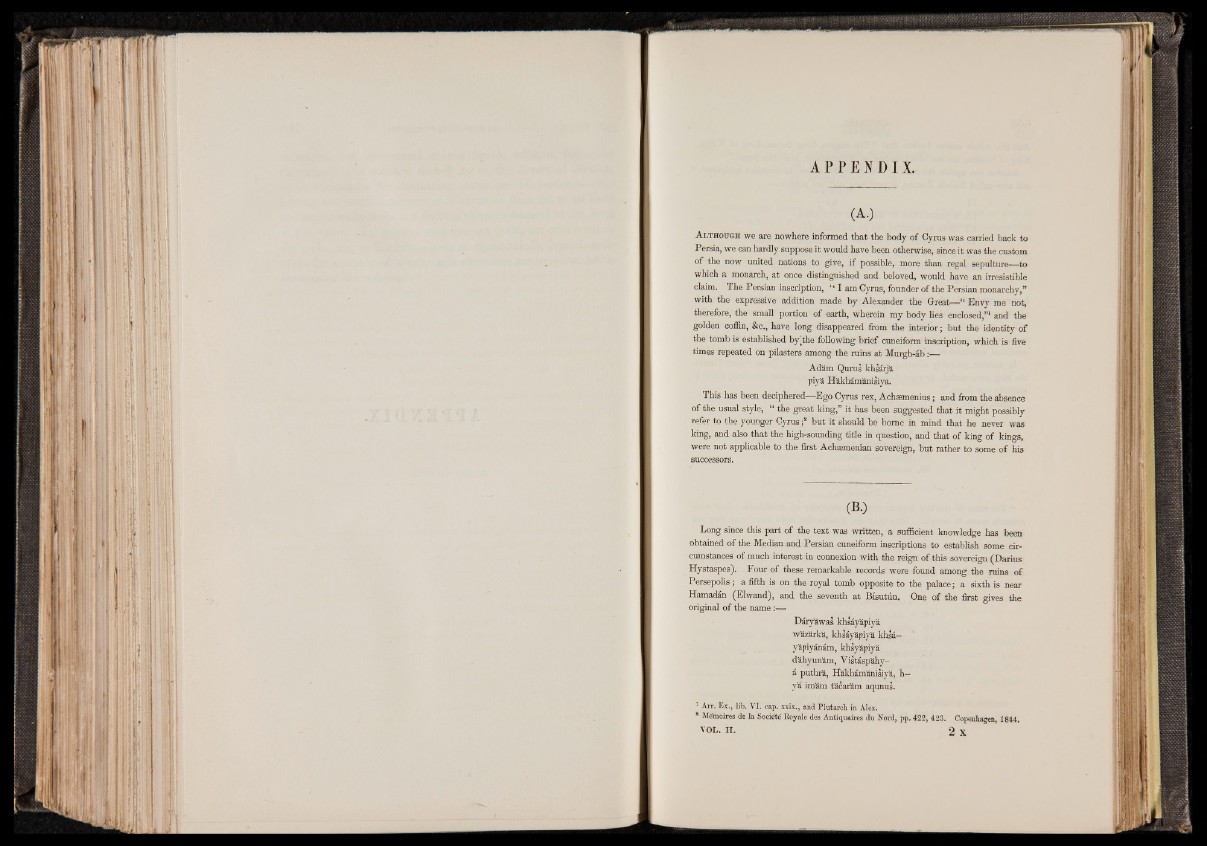
A P P EN DI X .
(A.)
A l t h o u g h we are nowhere informed that the body of Cyrus was carried back to
Persia, we can hardly suppose it would have been otherwise, since it was the custom
of the now united nations to give, if possible, more than regal sepulture—to
which a monarch, at once distinguished and beloved, would have an irresistible
claim. The Persian inscription, “ I am Cyrus, founder of the Persian monarchy,”
with the expressive addition made by Alexander the Great—I Envy me not,
therefore, the small portion of earth, wherein my body lies enclosed,”1 and the
golden coffin, &c., have long disappeared from the interior; but the identity of
the tomb is established by^he following brief cuneiform inscription, which is five
times repeated on pilasters among the ruins at Murgh-ab:—
Adam Qurus khsarja
piya Hakhamanisiya.
This has been deciphered—Ego Cyrus rex, Achsemenius; and from the absence
of the usual style, “ the great king,” it has been suggested that it might possibly
refer to the younger Cyrus ;2 but it should be borne in mind that he never was
king, and also that the high-sounding title in question, and that of king of kings,
were not applicable to the first Achaamenian sovereign, but rather to some of his
successors.
m
Long since this part of the text was written, a sufficient knowledge has been
obtained of the Median and Persian cuneiform inscriptions to establish some circumstances
of much interest in connexion with the reign of this sovereign (Darius
Hystaspes). Pour of these remarkable records were found among the rains of
Persepolis ; a fifth is on the royal tomb opposite to the palace; a sixth is near
Hamadan (Elwand), and the seventh at Pisutun. One of the first gives the
original of the name :—
Daryawas khsaydpiya
wazarka, khsayapiya khsa—
yapiyanam, khsyapiya
dahyundm, Vistaspdhy-
a puthrd, Hakham'anisiya, Ilya'
imam tdcardm aqunus.
1 Arr. Ex., lib. VI. cap. xxix., and Plutarch in Alex.
* Mémoires de la Société" Royale des Antiquaires du Nord, pp. 422, 423. Copenhagen, 1844.
VOL. I I . 2 X